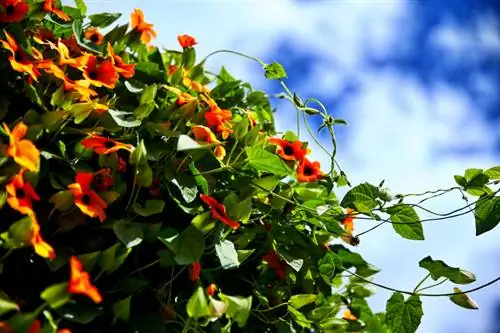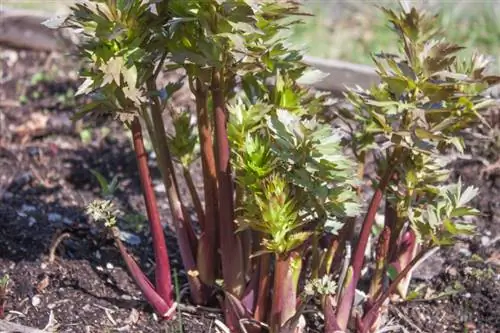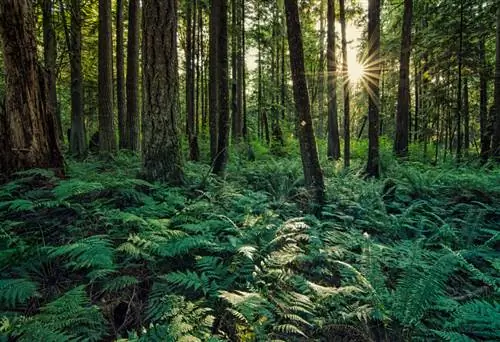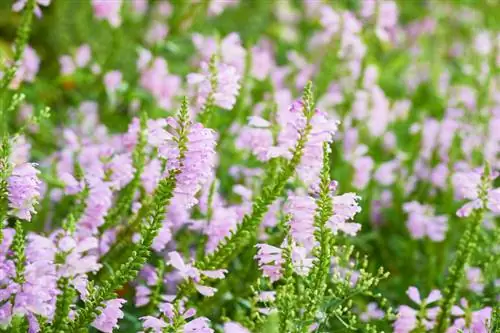- Author admin [email protected].
- Public 2023-12-16 16:46.
- Last modified 2025-01-23 11:20.
Black-eyed Susan is a child of the sun. In their native Africa it is warm and only moderately humid. You must meet these site conditions if you want to enjoy rich, long-lasting flowers from the edible climbing plant.
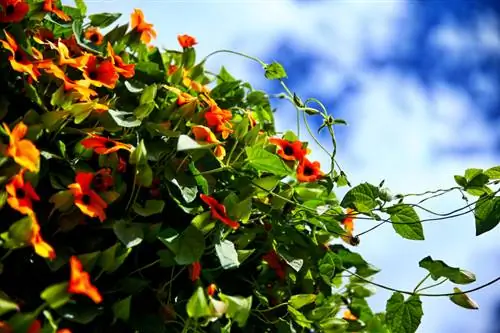
What is the ideal location for the Black-Eyed Susan?
The ideal location for the Black-eyed Susan is sunny, warm, airy but not drafty, and moderately humid. The plant needs at least three hours of direct sun per day and loose garden soil or potting soil without waterlogging. A stable climbing aid supports your climbing behavior.
The right location
- Sunny
- Warm
- Airy but not drafty
- Moderately humid
- Place without waterlogging
If you can't find a suitable place in the sun for the black-eyed Susan, a partially shaded place will do. In any case, it is cheaper than a location that is too cold and damp.
The black-eyed Susan develops most flowers when it receives at least three hours of direct sun per day. A sunny south-facing balcony, a south-facing terrace or a warm garden wall are ideal locations for black-eyed Susans.
Location not too humid and not too dry
Plant the black-eyed Susan in garden soil or potting soil that is as loose as possible. It is important that the irrigation and rain water can drain away.
You can loosen up solid soil by mixing in some sand or mature compost.
However, the earth must not dry out completely. Always water when the top layer of soil is dry.
Move up
The black-eyed Susan is a climbing plant that twines itself counterclockwise around everything it finds nearby.
Be sure to install a stable trellis on which the black-eyed Susan can grow. Only then will it reach a final height of two meters.
If necessary, help the shoots to reach the trellises. Please note that they rotate to the left.
Tips & Tricks
The black-eyed Susan is not a houseplant. It needs light and air to thrive. The non-hardy climbing plant is only kept indoors in winter.

